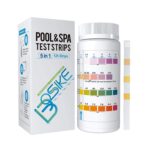
Pool Ozone Systems: A New Pool Owner’s Guide to Ozone Sanitation
Understanding the Basics, Benefits, and Maintenance of Ozone Pool Systems
Introduction
As a new pool owner, you may be considering various methods to maintain clean and safe pool water. One of the more advanced options is the use of ozone pool systems. This article will provide an overview of ozone pool systems, explain their benefits, and offer guidance on maintenance, helping you decide if this technology is the right fit for your pool.
- Basics of Ozone Pool Systems
Ozone pool systems use ozone gas (O3) to sanitize pool water by oxidizing and destroying contaminants such as bacteria, viruses, and algae. These systems work by generating ozone gas, typically through ultraviolet (UV) light or corona discharge methods, and then injecting the ozone into the pool’s circulation system. The ozone reacts with contaminants in the water, neutralizing them and leaving only oxygen and harmless byproducts behind.
It’s important to note that ozone systems should be used in conjunction with a residual sanitizer, such as chlorine or bromine, since ozone does not leave any residual protection in the water.
- Benefits of Ozone Pool Systems
Ozone pool systems offer several advantages to pool owners, including:
a) Improved Water Quality: Ozone effectively oxidizes and eliminates harmful contaminants, resulting in clearer, cleaner, and safer pool water.
b) Reduced Chemical Use: Ozone systems can reduce the amount of chlorine or other sanitizers needed, leading to fewer chemical-related irritations and odors.
c) Enhanced Safety: Ozone is a powerful oxidizer that can neutralize chlorine-resistant microorganisms, reducing the risk of waterborne illnesses.
d) Eco-Friendly: Ozone systems are environmentally friendly, as they do not produce harmful byproducts or require the disposal of hazardous chemicals.
e) Low Maintenance: Ozone systems require minimal maintenance, making them an attractive option for busy pool owners.
- Maintenance of Ozone Pool Systems
While ozone pool systems are relatively low-maintenance, there are a few key tasks to ensure optimal performance:
a) Lamp Replacement (UV Ozone Systems): UV lamps have a limited lifespan, typically around 12,000 to 14,000 hours of operation. It’s essential to replace the lamp as per the manufacturer’s recommendations to maintain effective ozone production.
b) Check Electrodes (Corona Discharge Ozone Systems): Corona discharge systems use electrodes to generate ozone. Over time, the electrodes may require cleaning or replacement. Consult the manufacturer’s guidelines for specific maintenance requirements.
c) Inspect and Clean Components: Regularly inspect and clean other components, such as injectors, tubing, and check valves, to ensure proper functioning and prevent leaks.
d) Monitor System Performance: Regularly check the ozone system’s performance indicators, such as the ozone output or system diagnostics, to ensure the system is operating effectively.
Conclusion
For new pool owners seeking an advanced, supplementary sanitation method that improves water quality, reduces chemical usage, and offers environmental benefits, an ozone pool system is worth considering. With minimal maintenance requirements, ozone systems are a convenient and effective option to enhance the safety and enjoyment of your swimming pool. By understanding the basics, benefits, and maintenance of ozone pool systems, you can make an informed decision and invest in a technology that aligns with your pool care preferences.




